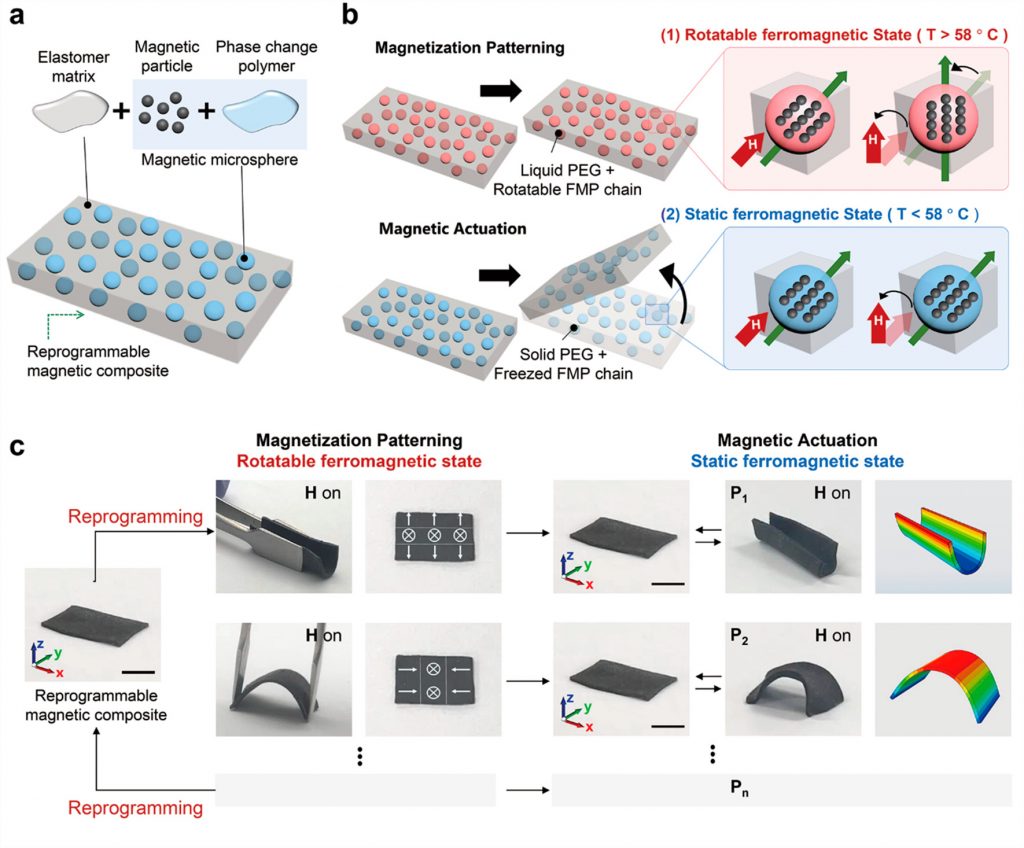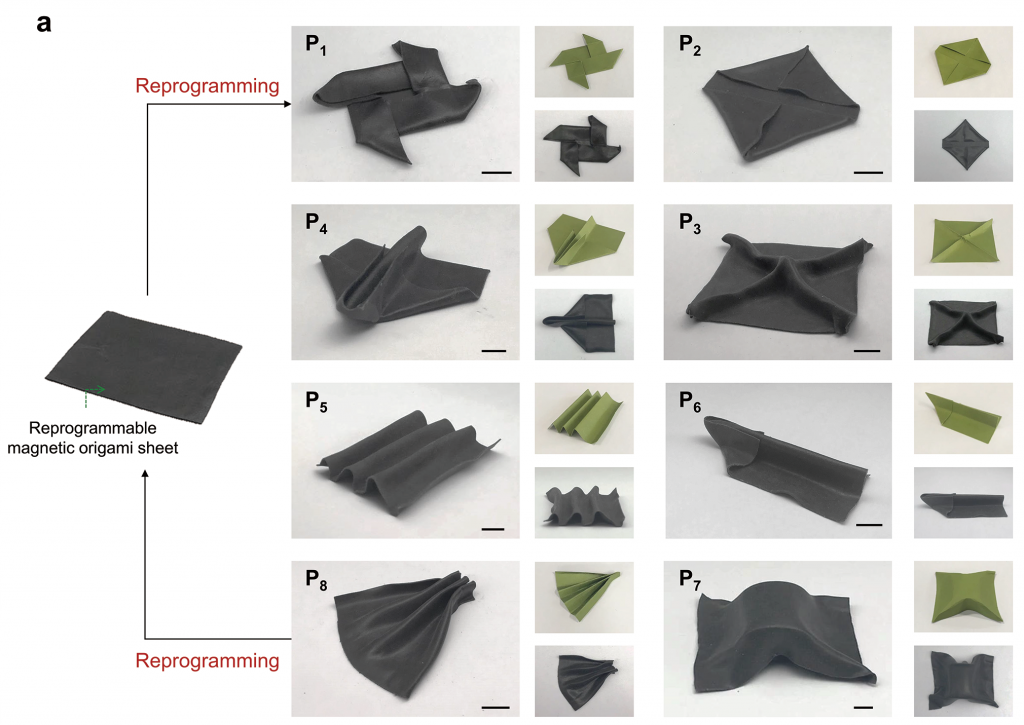It has now become possible to design a flexible magnetic smart material that changes its shape in response to a charging magnetic field.
A research team, led by Professor Jiyun Kim in the Department of Materials Science and Engineering at UNIST, in collaboration with Professor Min Sang Kwon in the Department of Material Science and Engineering at Seoul National University has introduced a new soft magnetic composite material, capable of reprogramming its magnetization profile without changing intrinsic magnetic properties of embedded magnetic particles or the molecular property of the base material.
Smart magnetic materials can move in multiple ways via the interactions between the pre-programed magnetization profiles and the external magnetic fields. That is like utilizing the magnetic force of attraction or repulsion between two magnets. The magnetization profile is the blueprint that determines the direction and the intensity of the magnetic field of the N-S pole. Indeed, depending on the shape of the magnetization profile, the magnetic smart materials bend, fold, twist, or curl in a certain direction. However, once programmed, it is nearly impossible to change the shape of the magnetization profile. This is one of the reasons why smart magnetic materials have not been used widely, despite its many advantages, such as fast response, remote actuation, and large penetration range for various conditions.

Figure 1. Design and mechanism of a reconfigurable magnetic composite. (a) Composition of a reconfigurable magnetic composite.
The joint research team has solved this issue by introducing materials that change their states according to temperatures. The newly-developed magnetic composite is composed of spatially separated magnetic microspheres embedded in the elastomeric matrix. Each magnetic microsphere consists of magnetizable neodymium–iron–boron (NdFeB) microparticles, with an average size of 5 μm, encapsulated in oligomeric polyethylene glycol (PEG). Moreover, the solid-to-liquid phase transition of this encapsulating oligomer allows the rearrangement of magnetic particles in the microspheres, as well as the realignments of magnetic particles to change magnetization directions in the magnetic microsphere. As a result, the researchers could rewrite magnetization patterns in the soft material by heating the structure to induce the phase transition of the microspheres and shaping it into any desired form under external magnetic fields while it cools.
“Our material architecture introduces a novel approach to reprogram the magnetization profile in a soft magnetic composite by controlling ferromagnetic particle arrangements using the solid–liquid phase transition of the polymer encapsulating the particles,” says Hyeonseo Song (Combined MS/Ph.D. in the Department of Materials Science and Engineering, UNIST), the first author of the study.

Figure 2. Various transformations of a reconfigurable soft magnetic origami sheet with a continuous magnetization pattern.
To demonstrate the complete reprogramming of complex magnetization profile, the research team developed diverse magnetic actuators with reprogrammable magnetization profiles, capable of folding itself like origami. “Using this method, we can freely program heterogeneous magnetization in the elastomeric base material and consequently transform the material into a programmed structure as many times as desired,” noted the research team. “This enables not only the design of magnetization transformations for magnetic soft materials but also the reprogramming of the actuation of magnetic soft composite materials.”
“It is of great significance to develop a new soft magnetic composite material, capable of reprogramming its magnetization profile without changing intrinsic magnetic properties of embedded magnetic particles or the molecular property of base material,” says Professor Kim. “The material developed this time is also flexible and will play a key role in materials science and applications that require variable structure smart materials such as biomedical engineering, flexible electrical devices, and soft robots.”
She adds, “We expect that this kind of soft magnetic composite with reprogrammable magnetization pattern could be used to make reconfigurable soft material systems for a wide range of applications, including applications in biomedical engineering, flexible electronics, and soft robotics.”
The findings of this research have been published in the July 2020 issue of Nano Energy. This research has been supported by the National Research Foundation of Korea (NRF) and the Korea Evaluation Institute of Industrial Technology (KEIT).
Journal Reference
Hyeonseo Song, Hajun Lee, Jaebyeong Lee, et al., “Reprogrammable Ferromagnetic Domains for Reconfigurable Soft Magnetic Actuators,” Nano Lett., (2020).














